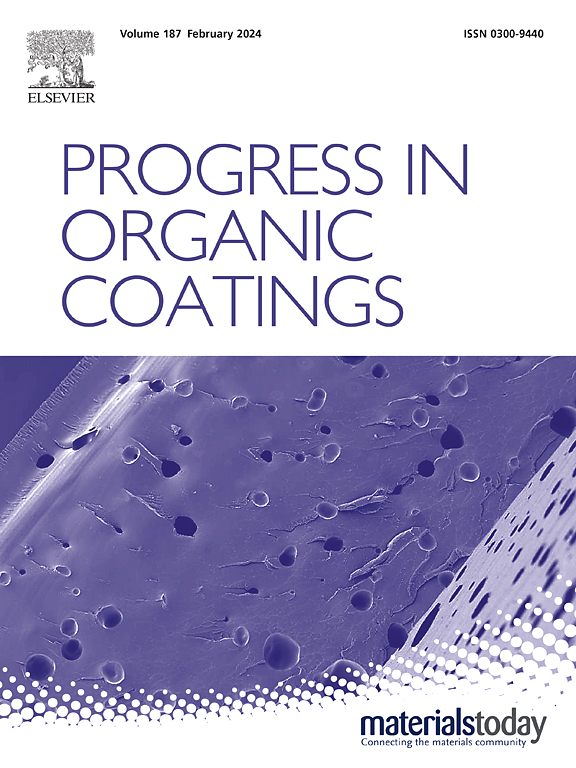High-contrast yellow-to-green electrochromic and electrofluochromic polyamides bearing triphenylamine fused to quinoxaline aimed for self-adaptive camouflage and explosive sensor
IF 6.5
2区 材料科学
Q1 CHEMISTRY, APPLIED
引用次数: 0
Abstract
This work provides an effective strategy for introducing a donor-acceptor-donor (D-A-D) type structure to modulate the polymer band gap, thereby achieving a multifunctional and synergistically enhanced electrochromic device (ECD). For the construction of the polymer structure, a quinoxaline (QX) moiety was utilized as a weak electron acceptor and conjugated with two triphenylamine (TPA) donors to form a new diamine monomer. This monomer was then polycondensed with three dicarboxylic acids to obtain a series of polyamides (PAs), named TPAQ-CA, TPAQ-OA, and TPAQ-SA. TPAQ-CA exhibits green color in the oxidized state, which achieves an optical contrast ratio of 80 % in the near-infrared range with short switching times of 2.9/1.5 s and maintains 80 % of the original optical contrast ratio after 2200 cycles. Owing to the distinct electrochromism from yellow to green, a self-adaptive camouflage model has also been developed for demonstration. Meanwhile, TPAQ-CA displays photoluminescence (PL) performance and aggregation-induced emission enhancement (AIEE) in the solid state, and it is responsive to explosives and HCl gas. Overall, this work highlights the great potential of these PAs for applications in camouflage and PL detection.

高对比度的黄到绿电致变色和电致荧光聚酰胺,含有三苯胺与喹啉融合,用于自适应伪装和爆炸传感器
这项工作为引入供体-受体-供体(D-A-D)型结构来调节聚合物带隙提供了一种有效的策略,从而实现了多功能和协同增强的电致变色器件(ECD)。为了构建聚合物结构,喹诺啉(QX)片段作为弱电子受体,与两个三苯胺(TPA)给体偶联形成新的二胺单体。然后将该单体与三种二羧酸缩聚得到一系列聚酰胺(PAs),命名为TPAQ-CA、TPAQ-OA和TPAQ-SA。TPAQ-CA在氧化状态下呈现绿色,在近红外范围内,在2.9/1.5 s的短开关时间内实现了80%的光学对比度,在2200次循环后保持了80%的原始光学对比度。由于从黄色到绿色的明显电致变色,一种自适应伪装模型也被开发出来进行演示。同时,TPAQ-CA在固体状态下表现出光致发光(PL)性能和聚集致发射增强(AIEE)性能,并对炸药和HCl气体有响应。总的来说,这项工作突出了这些pa在伪装和PL检测方面的巨大潜力。
本文章由计算机程序翻译,如有差异,请以英文原文为准。
求助全文
约1分钟内获得全文
求助全文
来源期刊

Progress in Organic Coatings
工程技术-材料科学:膜
CiteScore
11.40
自引率
15.20%
发文量
577
审稿时长
48 days
期刊介绍:
The aim of this international journal is to analyse and publicise the progress and current state of knowledge in the field of organic coatings and related materials. The Editors and the Editorial Board members will solicit both review and research papers from academic and industrial scientists who are actively engaged in research and development or, in the case of review papers, have extensive experience in the subject to be reviewed. Unsolicited manuscripts will be accepted if they meet the journal''s requirements. The journal publishes papers dealing with such subjects as:
• Chemical, physical and technological properties of organic coatings and related materials
• Problems and methods of preparation, manufacture and application of these materials
• Performance, testing and analysis.
 求助内容:
求助内容: 应助结果提醒方式:
应助结果提醒方式:


